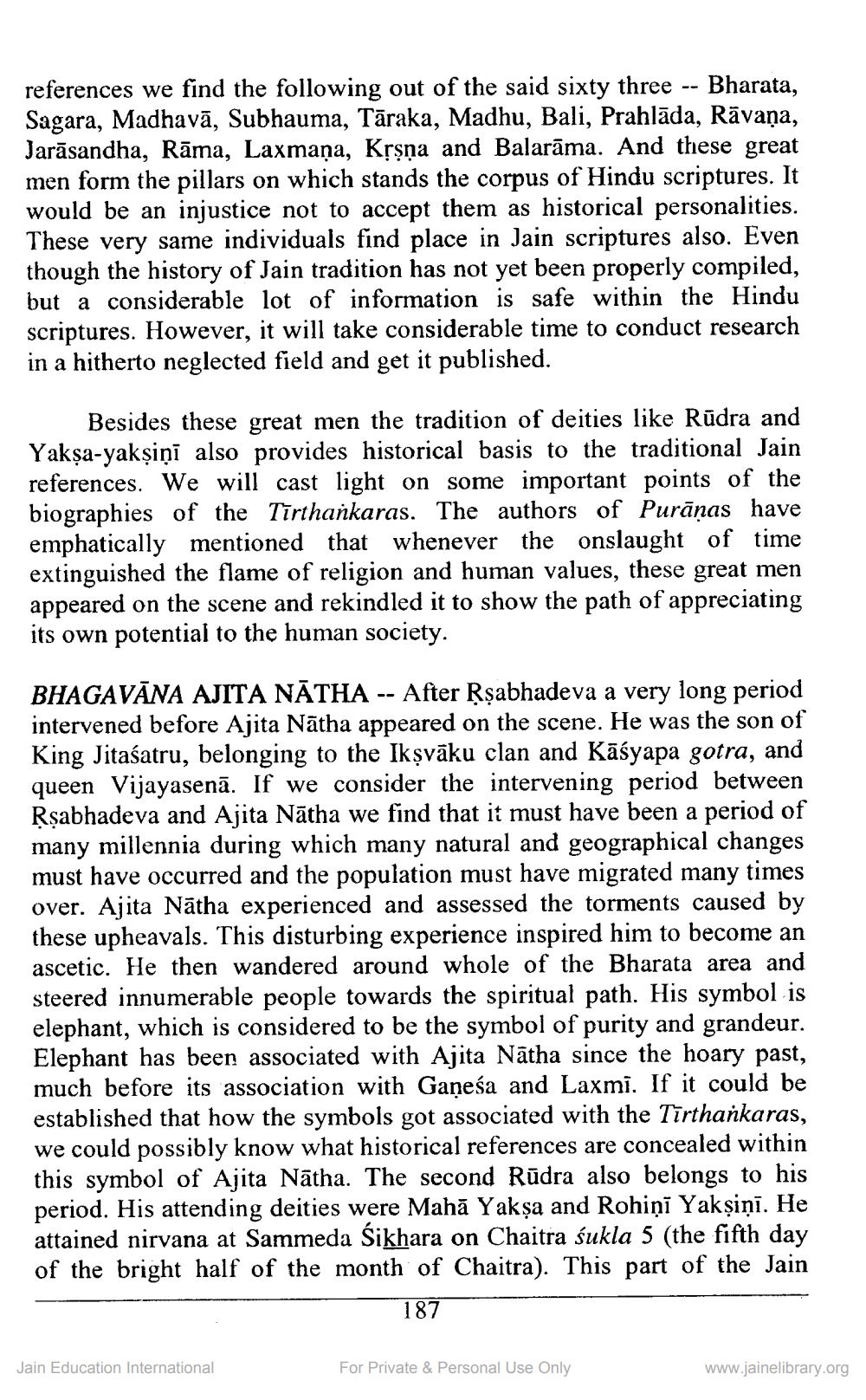________________
references we find the following out of the said sixty three -- Bharata, Sagara, Madhavā, Subhauma, Tāraka, Madhu, Bali, Prahlāda, Rāvana, Jarāsandha, Rāma, Laxmaņa, Krşņa and Balarāma. And these great men form the pillars on which stands the corpus of Hindu scriptures. It would be an injustice not to accept them as historical personalities. These very same individuals find place in Jain scriptures also. Even though the history of Jain tradition has not yet been properly compiled, but a considerable lot of information is safe within the Hindu scriptures. However, it will take considerable time to conduct research in a hitherto neglected field and get it published.
Besides these great men the tradition of deities like Rūdra and Yakşa-yakṣiṇī also provides historical basis to the traditional Jain references. We will cast light on some important points of the biographies of the Tirthařkaras. The authors of Purāṇas have emphatically mentioned that whenever the onslaught of time extinguished the flame of religion and human values, these great men appeared on the scene and rekindled it to show the path of appreciating its own potential to the human society.
BHAGAVANA AJITA NATHA -- After Rșabhadeva a very long period intervened before Ajita Nātha appeared on the scene. He was the son of King Jitaśatru, belonging to the Ikşvāku clan and Kāśyapa gotra, and queen Vijayasenā. If we consider the intervening period between Rşabhadeva and Ajita Nātha we find that it must have been a period of many millennia during which many natural and geographical changes must have occurred and the population must have migrated many times over. Ajita Nātha experienced and assessed the torments caused by these upheavals. This disturbing experience inspired him to become an ascetic. He then wandered around whole of the Bharata area and steered innumerable people towards the spiritual path. His symbol is elephant, which is considered to be the symbol of purity and grandeur. Elephant has been associated with Ajita Nātha since the hoary past, much before its association with Gaņeśa and Laxmi. If it could be established that how the symbols got associated with the Tīrthańkaras, we could possibly know what historical references are concealed within this symbol of Ajita Nātha. The second Rūdra also belongs to his period. His attending deities were Mah. Yakșa and Rohiņi Yakṣiṇī. He attained nirvana at Sammeda śikhara on Chaitra śukla 5 (the fifth day of the bright half of the month of Chaitra). This part of the Jain
187
Jain Education International
For Private & Personal Use Only
www.jainelibrary.org




